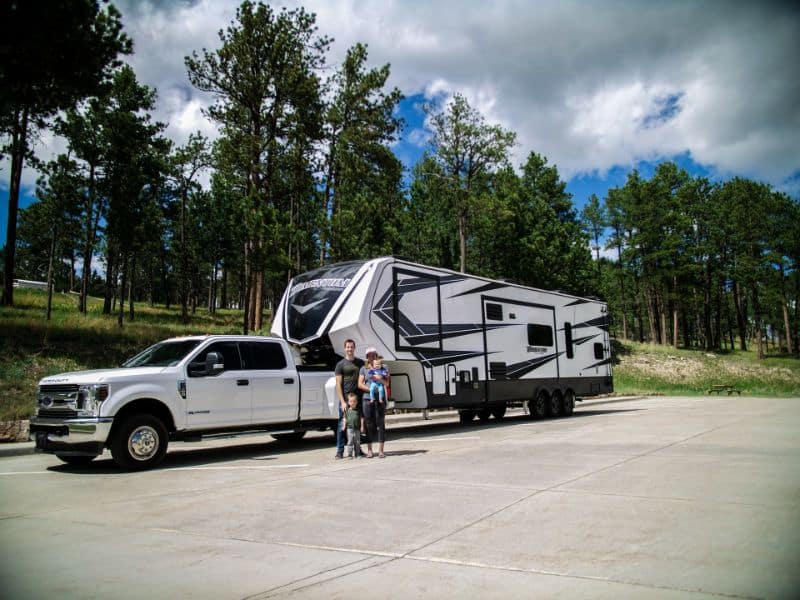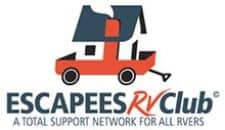The COVID pandemic quarantined people in stuffy, sterile rooms. So it’s no wonder the isolation unleashed a torrent of interest in self-contained, mobile, outdoor travel – and the RV industry responded.
In 2021, the RV industry produced more than 600,000 rigs. The Recreational Vehicle Industry Association (RVIA) proudly proclaimed it “The Year of the RV.”
Today, RV manufacturers are sitting on billions of dollars’ worth of inventory. Dealers find their financing maxed out. Service centers are inundated with warranty requests. Facebook Marketplace is already filling up with lightly used RVs.
We’ve arrived at the end of the rainbow, and the pot of gold has gone missing.
If you’re an RV owner, 2022-2023 might be a trying time. In this post, we want to share some information and guidance about a particular problem: Campground overcrowding.
How COVID Created an RV Perfect Storm

RV shipments in 2021 were 40% greater than 2020 and 19% higher than 2017, the previous record high. As interest in the Outdoors surged and interest rates plummeted, customers flocked to cheap financing and cheap trailers.
But while major manufacturers like Forest River and Thor were slapping themselves on the back, a turbulent tide of concern was rising.
- Dealers complained about shoddy workmanship.
- Owners complained about insufferable service repair waits.
- Newbie RV travelers couldn’t find an open campground.
Even the RV manufacturers weren’t exempt, with many smaller companies complaining about stiff part shortages as Big Players ate up available inventory.
Many of these COVID-era problems can be fixed with more stringent quality control and a robust supply chain. Many experienced RV owners are waiting until the pandemic is over to purchase their next RV. They’re either waiting until production quality improves – or until they can snag a lightly-used RV secondhand for cheap!
But there’s one problem that won’t go away anytime soon: Campgrounds haven’t keep up with demand.
Tips for Buying a COVID-Era RV:
- Insist on a qualified inspection (if used) or copies of the PDI form (if new/warrantied).
- Choose a dealership/service center with an excellent reputation and reasonable cycle times.
- Choose financing with a fixed, not adjustable, interest rate.
What’s Driving Campground Overcrowding?
1. The Classic American Road Trip
Kyle and Olivia Brady of Drivin and Vibin retired from full-time RV travel in 2022. In their post, “Why We’re Quitting RV Life After 5 Years?”, the Brady’s explained:
At the risk of sounding like a cranky old man, “there are too many damn RVs on the road!” I’m thrilled that more Americans are taking RV vacations. It’s just that I can’t get a reservation anywhere. The combination of state restrictions and an onslaught of RVers make it very frustrating trying to plan a trip.
– Drivin and Vibin

More than 11 million American households own an RV. That’s roughly 1 out of every 11 American families. And if most of those households decide to vacation July-September, you can imagine where the crowding comes from!
Campgrounds are like highways: They must be sized for rush hour traffic. But with only 15,000 campgrounds across America, and many of them in out-of-the-way locations, popular tourist spots fill up quickly. Anything in the Sun Belt – particularly California, Arizona, Texas, and Florida – is particularly vulnerable to overcrowding.
2. The Rise of Mobile Living
According to responses at RVTravel.com, many smaller campgrounds now focus on extended-stay or long-term rentals rather than overnight stays. One campground owner said this:
When I noticed my weekenders were coming less and less but my bills and maintenance continued to need attention, I, and many other RV parks, began taking ‘extended’ stay RVers. These were folks who were selling their home and were moving to a new state to buy a new home. Or they were college students who need a place for a semester. There were also the ‘Worker Bees’ that work mowing/repairing highways and power lines, and construction workers putting up new Dollar Generals that need 6 weeks or so for a place to stay.
-Sarah S.
And who can blame this campground owner? Far more secure to have guaranteed income for a month than intermittent income for 1- and 2- night stays.
Many RVers are now renting or leasing their favorite sites at their favorite campgrounds for seasonal or year-round use. Not all RVers travel and wanderlust; some merely commute to their family-favorite sites.
3. Limited Campsites and Camping Companies

The National Association of RV Parks and Campgrounds has only 3,000 members. That’s not much for a country of 330 million people!
And the American camping scene is dominated by only a few major players:
- National Parks and Federal Land: Many national parks and federally-owned public lands, such as BLM land, offer extensive low-cost and free camping opportunities.
- State Parks and State Lands: Most states maintain quite a few RV campsites as well, although you might have problems if you’re towing or driving one of today’s giant rigs!
- KOA: By far, the biggest chain/franchise camping company in America is KOA. But even this franchise has only 500 or so campgrounds!
The rest of the commercial landscape is populated by high-priced RV resorts (like Thousand Trails) and mom n’ pop operations. Building a large-scale RV campground can cost $2-4 million excluding land! Without investment from institutional investors, building or updating an RV campground is cost-prohibitive for most owners.
Tips for Stress-Free Road Tripping in an RV:
- Plan your trip far in advance if possible! Many campgrounds only accept phone calls, not emails.
- If you want to fly by the seat of your pants, plan on staying in out-of-the-way locations such as state parks, BLM land, and hole-in-the-wall campgrounds.
- Consider joining a discount camping club or special-access club like Boondockers Welcome/Harvest Hosts, Escapees, Good Sam Club, or Passport America.
What’s the Future of Campground Crowding for RVers?
Unfortunately, I do not expect a solution for campground crowding any time soon. But here’s where I think the industry is headed.
Remote Living Will Boost RV Interest for Years to Come
Millennials and Gen Z’ers are avidly interested in travel tourism, remote living, and outdoor glamping. As they age and earn income, they will compete for limited site inventory. It’s a classic supply-and-demand problem where RV camping could rapidly become as expensive as renting a hotel room!
Campgrounds Will Invest in Destination Trailers
WIth the rise in Tiny Homes, park models (PMRVs) and destination trailers, I think more campgrounds will invest in destination trailers, where the campground owns the RV and the customer just rents it for their stay.
In fact, unless the RV industry can fix the OEM quality and service center repair time problems, I think destination trailers and RV short-term rentals may rapidly become the norm. With larger trucks becoming so expensive, RV ownership is a luxury many people would gladly exchange if they could simply rent an RV at their chosen campground.
(I also think the rise in remote living will boost destination trailers, as most gig workers would prefer to rent their living space rather than haul it with them.)
Boondocking Will Grow In Popularity
… that is, unless you’re willing to head for the boonies. Improvements in off-grid technology, such as gas-efficient inverter generators, solar panels, and lithium batteries, now allow campers to enjoy modern conveniences without water or power hook ups.

If zoning laws change and RVs are allowed to temporarily park on land without RV hookups, then there will be a massive land grab across the Sun Belt, I think. With a couple thousand dollars in gravel and a security fence, you could transform a few acres into a money-making machine!
Larger RVs May Be Banned from Public Lands
I expect that out-of-the-way state parks and public lands will still offer relatively uncrowded camping, but I’m concerned that today’s larger RVs will lose access due to Leave No Trace ethics. I’ve already seen too much damage to fragile desert landscapes in Arizona, Utah, and New Mexico. Or popular sites may be seasonally closed to limit environmental damage.

Overnight Stays Will Become Extremely Competitive
Monthly and quarterly site rentals will become more common. I wouldn’t be surprised if most campgrounds adopted a split-reservation system with 1-2 sites kept available for walk-ins, 5-10 sites reserved for nightly rentals, and the rest open to the highest bidder or longest renter.
You will also have to pay upfront with a major credit card, I think. Campgrounds can’t keep accepting phone calls forever. Eventually, you’ll rent a campground much the same way as you buy an airline ticket.
Andy Herrick is a blogging nerd, #8 Enneagram, wannabe bread baker, INTJ, RV industry professional, and small business entrepreneur. He can be found hanging out with his lovely wife and family, skiing, cycling, climbing, hiking, and convincing anyone who will listen why dogs aren’t really that great of pets. Also, he runs this website.
-
Andyhttps://changingears.com/author/andrew-herrick/
-
Andyhttps://changingears.com/author/andrew-herrick/
-
Andyhttps://changingears.com/author/andrew-herrick/
-
Andyhttps://changingears.com/author/andrew-herrick/








